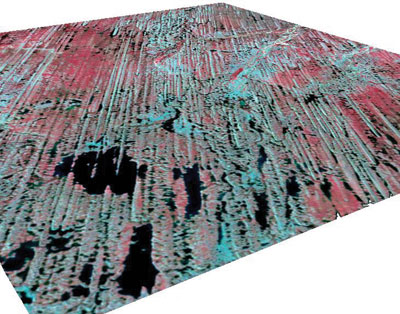| 2006 |

|
YEAR BOOK |
University of Ulster
|
Subglacial bedforms - the keys to unlocking ice sheet dynamics
|

Currently, concern is growing regarding the stability of contemporary ice sheets and how changes in their state might influence both global climate and sea levels. Of particular interest is the West Antarctic Ice Sheet (WAIS) which is known to have previously collapsed and is currently being drained by several large ice streams.
These arteries of fast flowing ice are being driven along largely by soft sediments that are actively deforming at their base. These ice streams discharge 40 per cent of the ice from the WAIS and given that it contains sufficient water to raise sea level by 5 m, there is a pressing need to understand the future behaviour of this ice sheet.
Research on palaeo-ice sheets shows that subglcial bedforms such as ribbed moraines, drumlins and Mega Scale Glacial Lineations (MSGL) inhabit corridors formerly occupied by ice streams. Therefore, knowledge of how these landforms are generated can provide key information on ice stream functioning.
The Glaciated Basin Research Group in conjunction with scientists from Sheffield University and the British Antarctic Survey have applied a novel multidisciplinary approach to the problem of how subglacial bedforms are created. Using remote sensing (e.g. satellite imagery), Geographic Information Systems (GIS) and numerical ice sheet models, the team recently established that ribbed moraines are most likely formed by a naturally arising instability that operates when an ice sheet flows across a soft deforming sedimentary bed.
Preparations are now underway to apply this methodology to explain the formation of drumlins and MSGL. It is envisaged that this research will shed much light on the role that these enigmatic landforms play in controlling ice sheet motion.
Contact: Contact: Dr Paul Dunlop,
Environmental Sciences Research Institute,
School of Environmental Sciences,
University of Ulster, Cromore Road, Coleraine, Co. Londonderry, BT52 1SA.
E-mail: [email protected]
Tel: +44 (0)2870 324688